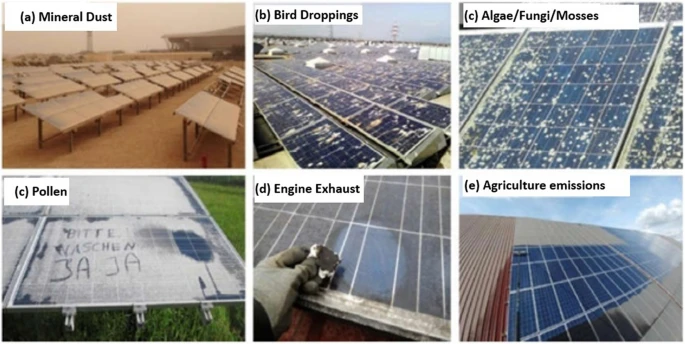Does Dust Affect Solar Panels?
In the era of renewable energy, solar panels have emerged as a key solution for sustainable power generation. However, a seemingly innocuous element – dust – can pose a significant challenge to their optimal performance. This article looks at how dust affect solar panels. It explores how this happens, how much it matters, and ways to reduce the impact.
How Dust Impacts Solar Panels
Reduction in Light Absorption
Solar panels operate on the principle of converting sunlight into electricity through the photovoltaic effect. Dust particles, when they settle on the surface of solar panels, act as an obstruction. They form a thin layer that scatters and reflects incoming sunlight, preventing it from reaching the photovoltaic cells beneath. Even a thin layer of dust can greatly reduce the light available for conversion. This leads to a direct drop in the panel’s power output. For example, studies show that in dusty places, a layer of dust can cause power loss. This loss can be up to 30% or more if it is not cleaned over time.
Heat Trapping and Thermal Effects
Dust accumulation can also lead to heat – trapping on the surface of solar panels. Dust does not conduct heat well. This means it stops heat from moving away quickly when the panels are working. Excessive heat can have detrimental effects on the performance and lifespan of solar cells. High temperatures can harm the electrical properties of the cells. This reduces their efficiency and may shorten their lifespan. As the trapped heat raises the temperature of the panels, the overall efficiency drops. This worsens the loss of power generation.
Factors Influencing the Impact of Dust
Environmental Conditions
The impact of dust on solar panels varies greatly depending on the environment. In dry and desert areas, dust storms happen often. Solar panels face a lot of fine dust particles. The dry and dusty climate causes dust to build up quickly. The rough dust particles can also harm the panel surface over time. In humid and rainy areas, dust can still build up. However, rain helps clean the panels. This reduces the long-term effects of dust on how well the panels work. In industrial areas with polluted air, dust can have harmful chemicals. These chemicals may corrode the panel surface and cause more damage.
Panel Design and Installation
The design and installation of solar panels also play a role in how dust affects them. Panels with a smooth, water-repellent surface are less likely to hold dust. Rain can easily wash away the particles. Additionally, the angle at which installers position the panels can influence dust accumulation. Panels installed at steeper angles are better at shedding dust because of gravity. In contrast, flat-mounted panels tend to collect more dust. Regularly tilted panels can also benefit from the wind, which may blow away some of the dust particles.
Mitigation Strategies
Regular Cleaning
One of the most straightforward ways to combat the impact of dust on solar panels is through regular cleaning. Manual cleaning with a soft-bristle brush and water can remove dust and improve the panel’s performance. However, this method can be time – consuming and labor – intensive, especially for large solar farms. Automated cleaning systems, such as robotic cleaners, are becoming increasingly popular. These robots can move over the panel surface. They spray water and use brushes to clean the panels. This reduces the need for manual help.
Anti – Dust Coatings
Another solution is the application of anti – dust coatings. These coatings are made to repel dust. They can do this in two ways. One way is through hydrophobic or ultra-water-repellent properties. These properties make water bead up and wash away dust when it rains. The other way is through static properties. These properties stop dust from sticking to the surface. Some advanced anti-dust coatings can also clean themselves. They use sunlight to break down organic materials that cause dust to stick.
Monitoring and Prediction
Implementing monitoring systems that can detect the level of dust accumulation on solar panels is crucial. By regularly measuring the power output of the panels, operators can see how it compares to the expected output. This helps them know when cleaning is needed. You can use weather data and dust-prediction models to predict times of high dust buildup. This helps you plan cleaning and maintenance ahead of time.
In conclusion, dust greatly affects solar panels. It impacts their power generation and long-term durability. We understand how dust impacts us. This knowledge helps us find ways to lessen its harmful effects. As the solar energy industry grows, it is important to deal with dust buildup. This will help improve the performance and return on investment of solar power systems.
